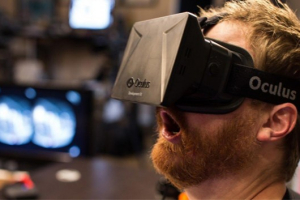There can be no doubt that this will be the year for Virtual Reality (VR) with headsets like the HTC Vive and the Oculus Rift. The latter has its own Oculus Story Studio, and it was founded by Max Planck, who is a ten-year veteran of Disney Pixar. We all know that Pixar is the master of storytelling in the past few decades, and the big question is how Virtual Reality is going to affect how VR films will work. This is what is known about Oculus Rift's VR films from Pixar that include "Lost", "Henry", and "Dear Angelica".
So how does a story in Virtual Reality work? Well, whenever you watch a film or television show, the viewer sees what the camera sees. With editing and post production tricks, an entire tone and language can happen. Yet that is filmmaking with essentially a 2D medium, now imagine if the viewer could experience that in 3D. I'm not talking about a typical 3D movie, but a setting that you can walk around and possibly interact with.
According to CNET, there are three films that have been created by Max Planck to test out the new science of VR storytelling. The first film that Oculus Story Studio will put out is "Lost", and it is not related to the mysterious and supernatural series on ABC for six seasons (two of them were good). "Lost" is about a person (the viewer) who finds him or herself in the middle of a dark forest and unravels the mystery of a puppy-like robot that pops out of a grove of bushes.
The second project is "Henry", which is more of a comedy. It is a nine-minute short about a porcupine at a birthday party, and I'm guessing it goes as well as can be expected. Planck says that "we found we can make someone feel", and Pixar has given us several cases of "the feels" this past year with Inside Out and Finding Dory.
The last project sounds very ambitious with "Dear Angelica", which puts viewers inside someone's imagination, thanks to an illustration tool known as Quill. Quill allows an artist to paint brushstrokes in the air, which will depict a daughter's dreamlike memories of her departed mother. It sounds like this could get quite emotional, honestly.
So how does this work? Are you put in the center of the story? If so, then these VR stories could end up being like video games. I was playing a game called Lifeless Planet the other day, and it had a story that I can interact with, and stirs genuine emotion. Perhaps this is what we are going for.
Whatever the case, I am personally excited to see what kind of stories that people in Pixar can come up with, especially in the growing front of Virtual Reality. It will be the difference between books and movies.

















